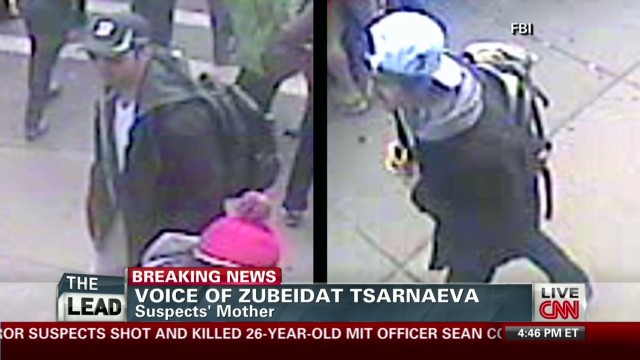Chris Dodkin
West Coast Correspondent
The recent events in Boston, and the subsequent digital forensic search for images of the bombers, triggered a memory in me of the excellent Blade Runner movie.
In the movie, Detective Deckard finds a stack of photos while searching (replicant) Leon's apartment, and as he's browsing through the photos, one of them catches his eye.

He scans the image with a machine (the ESPER machine) - and then uses the machine to digitally zoom in on the mirror on the wall in the photo, then further into the reflection to eventually see an image of another replicant in the next room.

Back when I watched the movie in 1982 - such digital imaging was pure science fiction - and the ability to locate and recognize people in such images seemed far fetched.
Fast forward to 2013 - and the Boston bombings.
After the explosions, the police immediately ask for all digital images from CCTV, cellphones, TV, stills etc - in the hope that they can locate and ID the bombers.
Thousands of images are provided by the press and public - and the FBI use digital image processing and facial recognition software to process the images, and pull out images showing people of interest.

Within 48hrs we had images of both suspects, which were so compelling that the suspects immediately break cover, and end up being tracked and confronted by the authorities.


The sci-fi of Blade Runner has become a reality in 2013 - The movie predicted what we now have, and it got the date about right - Blade Runner was set in 2019.
I was lucky enough to see a prototype last week for a pair of binoculars being built for the DOJ - these binoculars are wirelessly connected to a network, and provide real time facial recognition of a subject - providing the user with a heads-up display in the field of view showing the match and probability of match.
I wouldn't have believed it unless I'd seen it - but you simply look at people in a crowd, and it gives you matches in real time.
We live in amazing digital times!
In the movie, Detective Deckard finds a stack of photos while searching (replicant) Leon's apartment, and as he's browsing through the photos, one of them catches his eye.

He scans the image with a machine (the ESPER machine) - and then uses the machine to digitally zoom in on the mirror on the wall in the photo, then further into the reflection to eventually see an image of another replicant in the next room.

Back when I watched the movie in 1982 - such digital imaging was pure science fiction - and the ability to locate and recognize people in such images seemed far fetched.
Fast forward to 2013 - and the Boston bombings.
After the explosions, the police immediately ask for all digital images from CCTV, cellphones, TV, stills etc - in the hope that they can locate and ID the bombers.
Thousands of images are provided by the press and public - and the FBI use digital image processing and facial recognition software to process the images, and pull out images showing people of interest.

Within 48hrs we had images of both suspects, which were so compelling that the suspects immediately break cover, and end up being tracked and confronted by the authorities.


The sci-fi of Blade Runner has become a reality in 2013 - The movie predicted what we now have, and it got the date about right - Blade Runner was set in 2019.
I was lucky enough to see a prototype last week for a pair of binoculars being built for the DOJ - these binoculars are wirelessly connected to a network, and provide real time facial recognition of a subject - providing the user with a heads-up display in the field of view showing the match and probability of match.
I wouldn't have believed it unless I'd seen it - but you simply look at people in a crowd, and it gives you matches in real time.
We live in amazing digital times!
